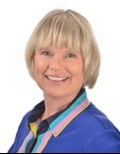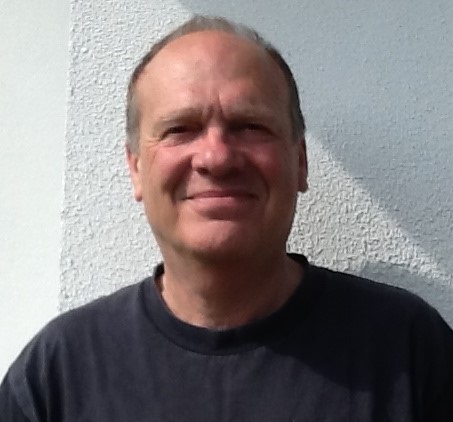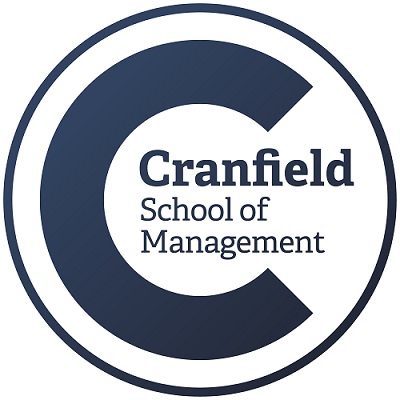- Learning
Executive Education Refreshed
Camilla Jonsson describes how Cranfield has shaped its general management portfolio to meet clients’ changing needs
Cranfield School of Management, a pioneer in executive education for over 40 years, has recently refreshed its popular portfolio of general management programs to reflect the learning priorities of client organizations and potential participants today.
The suite of four programs offered in 2019 focuses on the four key transition points in any management career:
Talent Development: Gives early career executives a managerial perspective and strengthens their leadership capacity
General Management: Helps functional managers/experts acquire a broader business perspective and move up to corporate leadership roles
Into Director: Supports experienced managers in becoming directors and joining the senior management team
Purpose: An ‘experience’ designed for senior leaders to cultivate purpose to create a more engaged and meaningful legacy

Two predominant factors motivate clients to engage with executive programs, says Camilla Jonsson, General Management Portfolio Director, Cranfield School of Management:
First accelerated transition: “Clients want to support their high-performing ‘talent,’ to enable them take up or inhabit a wider role more quickly and more securely, rather than leaving to happenstance whether people transition in or not.” Clients also want their people to be equally well equipped with ‘soft’ as well as ‘hard’ skills. “Clients seek ‘interwovenness’ between leadership, interpersonal capabilities and business-savvy and business decision making,” says Jonsson.
Secondly impact in the organization: Clients are keener than ever to the see the impact executive learning initiatives have in the organization. “Both mid-market businesses and really big corporates can become quite internally focused, so they want their leaders to get an external perspective, which they get in an open program setting with peers with similar needs but from a diverse mix of industries,” says Jonsson. “Coming on a program like ours, to transition into a wider, more senior role with more discretion, is about not just what you do but also who you get to know.”
The rhetoric around the value to the organization of talent, engaging talent, helping talent to accelerate has become clearer over time
Cranfield has seen a change in clients’ perspectives over the past five or six years, in that the need to develop potential talent has become a priority in organizations – leadership development has become a senior boardroom issue. “The rhetoric around the value to the organization of talent, engaging talent, helping talent to accelerate has become clearer over time. And leadership pipeline/leadership transition language has become very embedded in organizations,” says Jonsson.
In recent years, informed by insights from behavioural science and neuroscience, executive development work on inter-personal and personal leadership skills has got more sophisticated and gained a higher prominence. It is now well understood that effective leadership involves a combination between business skills and personal mastery and this understanding is a motivating factor for clients to put their people on executive programs.
There has also been a complete move away from ‘chalk and talk’. “In the Talent Development Program, there is still a certain need for knowledge development and awareness raising, but the minute you get higher up, it's about andragogy. It's about learning by doing and by experience and by reflection. This is a noticeable change,” says Jonsson.
According to Jonsson the Talent Development Program “flies off the shelf,” with some larger organizations using it as part of their talent management strategy, linking it to their organizational processes internally. The program helps them identify the potential talent they will invest in for the future, on the understanding it then becomes up to the individual whether they have the drive needed to realise that potential.
The General Management Program is for established functional managers now needing to widen out their sphere of influence, to work more broadly across functions and take people with them, sometimes without authority. With its links to Cranfield University, one on the UK’s leading centres of engineering and technology, the School of Management often attracts engineering managers or heads of IT, who as technical experts have achieved a lot and might be ambitious, need help to improve their ability to influence others, engage on the interpersonal level, and develop the self-knowledge and self-insight needed to be successful leaders.
On three of the programs – Talent Development, General Management, and Into Director – Cranfield partners with Mercuri Urval. Mercuri Urval offers a suite of instruments and coaching sessions to each individual participant, enabling them to understand their own potential, where they are in terms of motivation and drive, and link this directly into the program that they happen to be on. According to Jonsson, “This creates a career development platform for them… What it does very well is it predicts: what is my potential and ability to, say, in three years’ time, take up a director role? or what do I really need to develop to be able to realise my true potential?”
By immersive, we mean the intensity of learning experience, working on the cognitive, behavioural and values levels, and on personal capabilities
The Purpose experience is new and comes about from discussions had over many years with senior leaders of big organizations – CEOs and PLC board directors – who can often feel they are flying solo. They have been in very structured, high profile, corporate environments for probably their whole career, and are now being invited to contribute more widely by joining think-tanks, or becoming non-executive board directors, or chairing charities or boards of governors – new settings in which they can feel lost. This Purpose ‘experience’ (Jonsson hesitates to call it a program) offers these senior people the chance to spend time with like-minded people, and build an anchoring network, and through deep introspection and reflection to find the inner purpose that can help them set a course for the final part of their careers.
Commenting on the pedagogy underpinning of the refreshed program portfolio, Jonsson stresses the importance of the ‘immersive’ element. “By immersive, we mean the intensity of learning experience, working on the cognitive, behavioural and values levels, and on personal capabilities. It's about the intensity of introspection, learning new ideas, trying out thinking and doing… So it's a lot of exploration, experimentation, experiential exercises and reflective sessions.”
The aim of this approach is to close the gap between what is learnt and how it is implemented – the knowing/doing gap. Immersive is about taking experiential learning and weaving it into the participant's own work – applying new theoretical knowledge to the real world – and building the capabilities needed to do that. “Any time you try to do an initiative, you have to have very deep change capabilities, or influencing capabilities and engagement with people. So that's how it's all very interwoven and becomes immersive,” says Jonsson.
Technology provides a further way the pedagogy has been refreshed. Moving the portfolio onto an electronic platform called Canvas, not only enables greater flexibility and convenience in delivery but also allows for program participants to interact with faculty and amongst themselves more fully than before.
All our research shows that what makes the difference is the engagement of the organization and the line managers
Finally, Jonsson stresses the importance Cranfield places on measuring impact – to ensure the learning experience has a long-term impact not only for the individual but for the organization too. There are two formal review points for each participant. The first one, face-to-face three months after the program, confirms a detailed plan signed off with the participant's sponsor, focuses on what they both observed in terms of changes from the program. The second involves people coming together in small facilitated action learning groups to share what they have tried and how it has gone. This is recorded and then repeated after another few months.
The other key component in terms of impact is the commitment of the client organization to supporting the program participants and to taking on board new ideas and new practices they can bring. “All our research shows that what makes the difference is the engagement of the organization and the line managers,” says Jonsson.
………………………………………………………………………………………………………………………………….
A Complimentary Cranfield Learning Event: Tuesday 26 February
Join Camilla Jonsson and members of the Cranfield Executive Development team to explore ways to develop impactful career transitions in your organization and to learn more about Cranfield’s new portfolio.
Date/Time: Tues, 26 Feb, 2019 / 09:00 to 16:00 (GMT)
Location: Chelsea Football Club, London
………………………………………………………………………………………………………………………………….
ARTICLES YOU MIGHT LIKE
VIEWPOINT
For Thomas Misslin, transformation rather than training is the aim of executive education at emlyon business school
DEVELOPING LEADERS QUARTERLY MAGAZINE AND WEEKLY BRIEFING EMAILS


































